Abstract
1. In Ca-free solution, the contractile response of guinea-pig taenia caecum to 10(-4) M carbachol was mediated through muscarinic receptors and was reduced time-dependently by desensitization with 10(-4) M carbachol, but not 10(-4) M histamine. On the other hand, the response to 10(-4) M histamine was shown to be mediated through H1-receptors and to be reduced time-dependently by desensitization with either 10(-4) M histamine or 10(-4) M carbachol. 2. The maximal K+ contraction was not changed by desensitization with carbachol or histamine. Thus, contractile proteins and voltage-dependent Ca channels maintain their normal functions. 3. To study the coupling of Ca channel activity in cell surface membrane to receptor activation, the contractile responses elicited by carbachol and histamine added simultaneously with Ca to Ca-free solution were measured. The response elicited by carbachol plus Ca was not changed by desensitization with carbachol, while that elicited by histamine plus Ca was reduced by desensitization with histamine. These results show that desensitization by carbachol occurs at a post-receptor site, whereas that induced by histamine occurs at H1-receptors. 4. After desensitization with carbachol, but not histamine, the contractile response to 5 x 10(-2) M caffeine in Ca-free solution was significantly reduced. 5. These results show that short-term desensitization of guinea-pig taenia caecum by carbachol is heterologous and occurs at intracellular Ca stores, while that induced by histamine is homologous and occurs at histamine H1-receptors.
Full text
PDF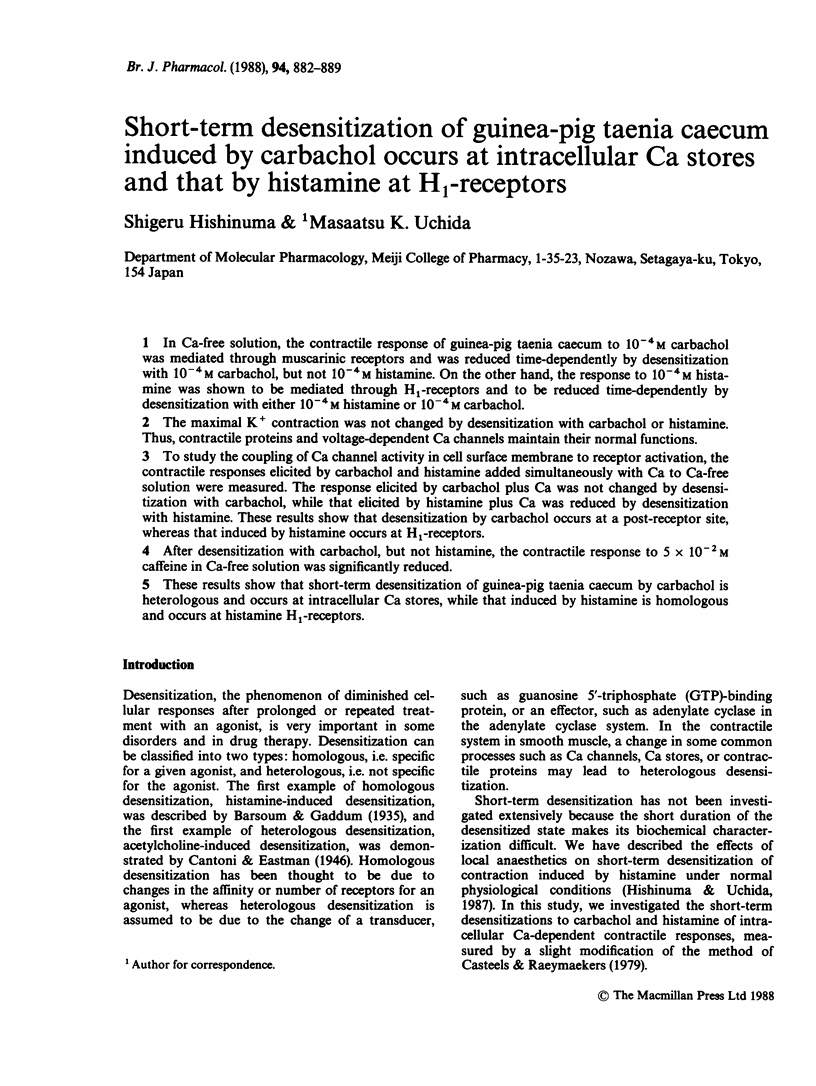
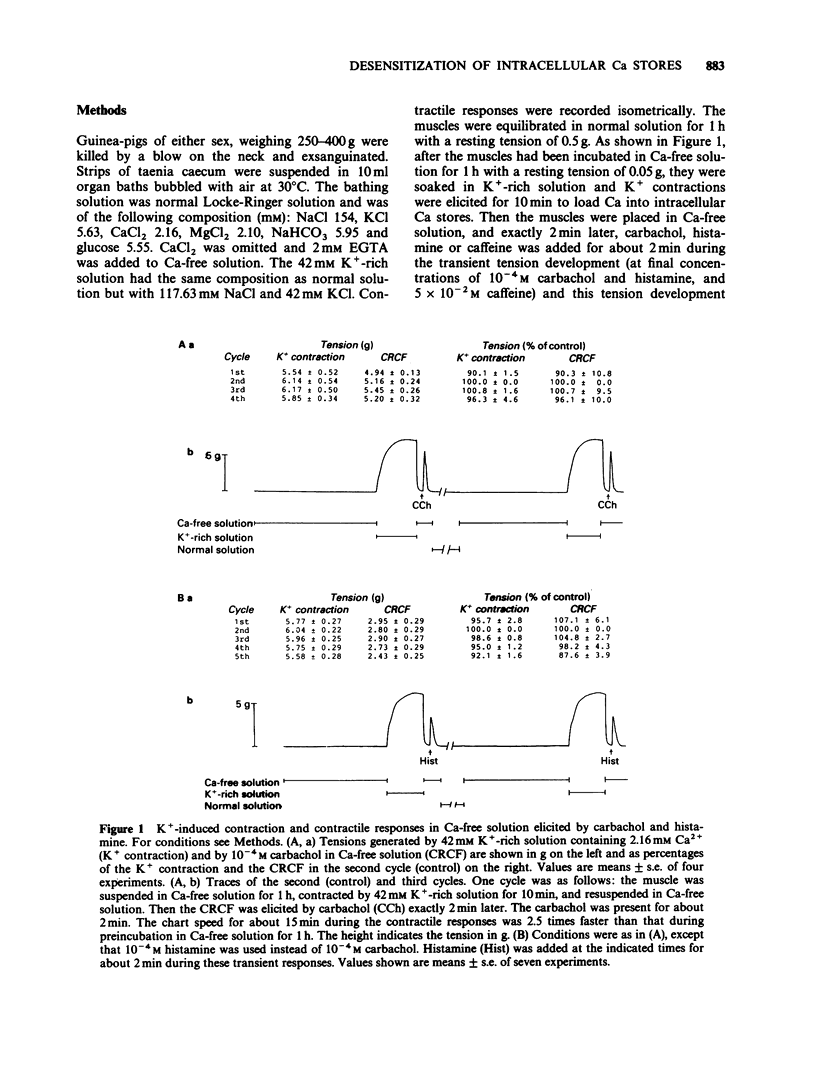
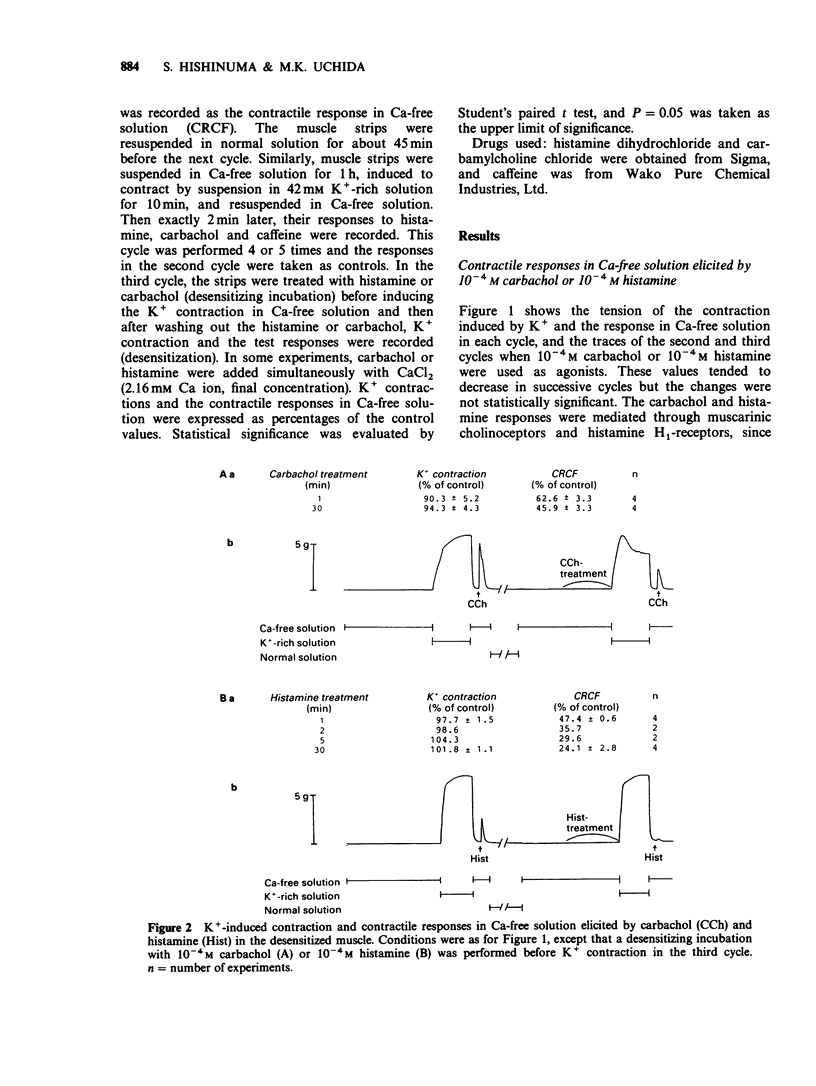
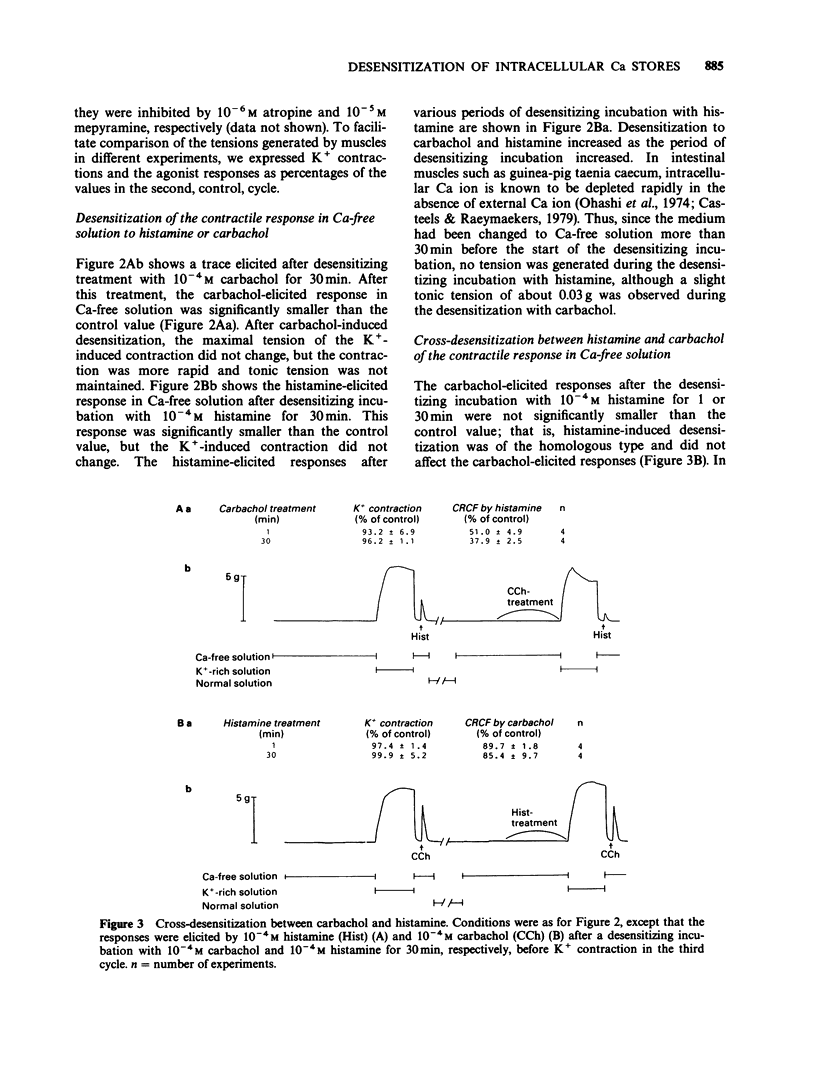
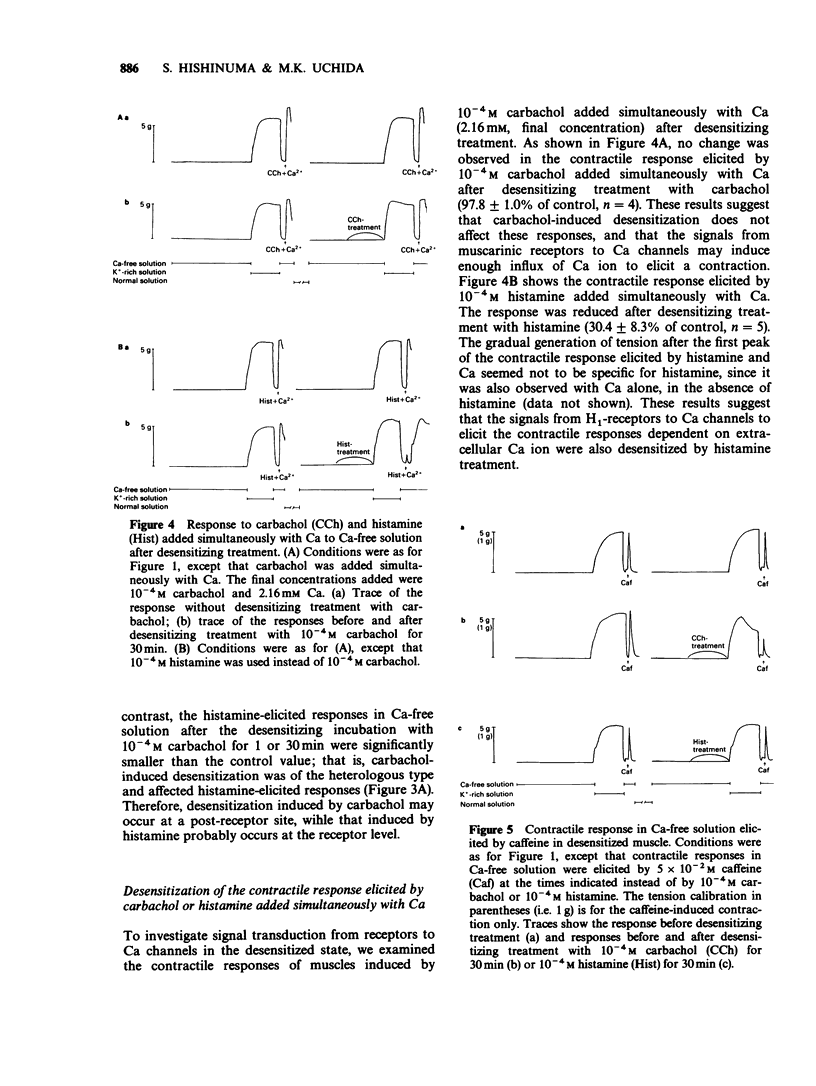
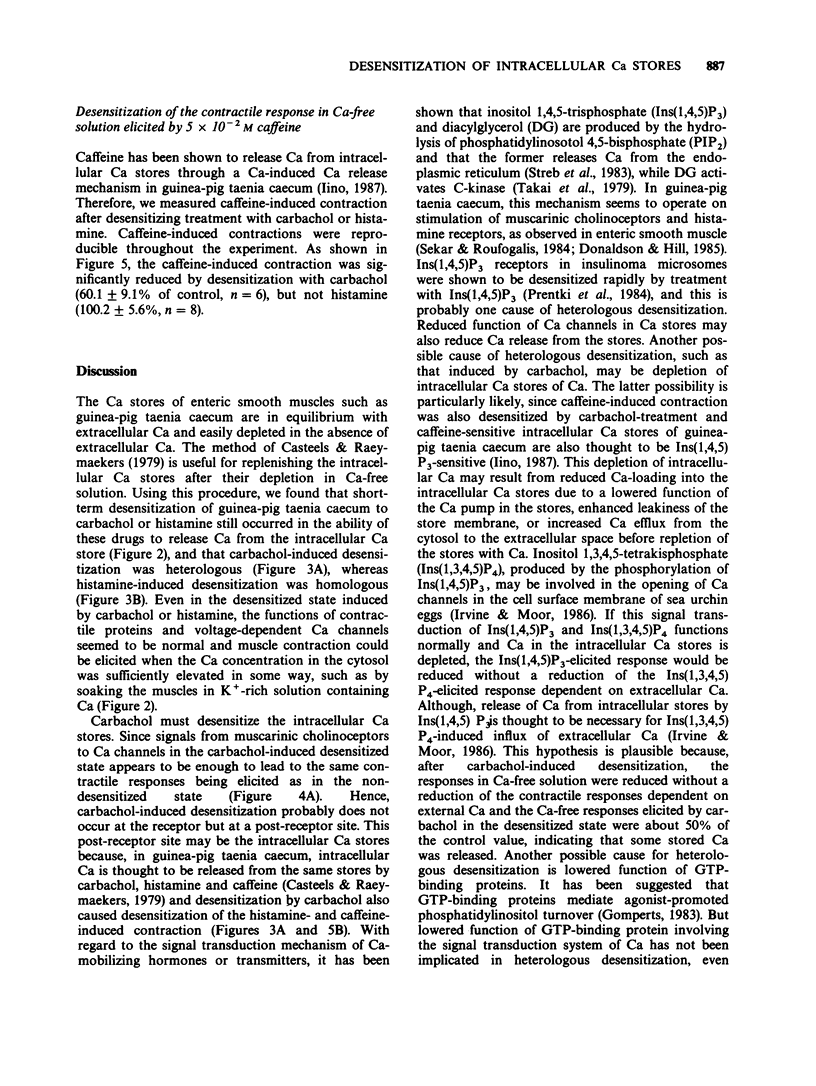
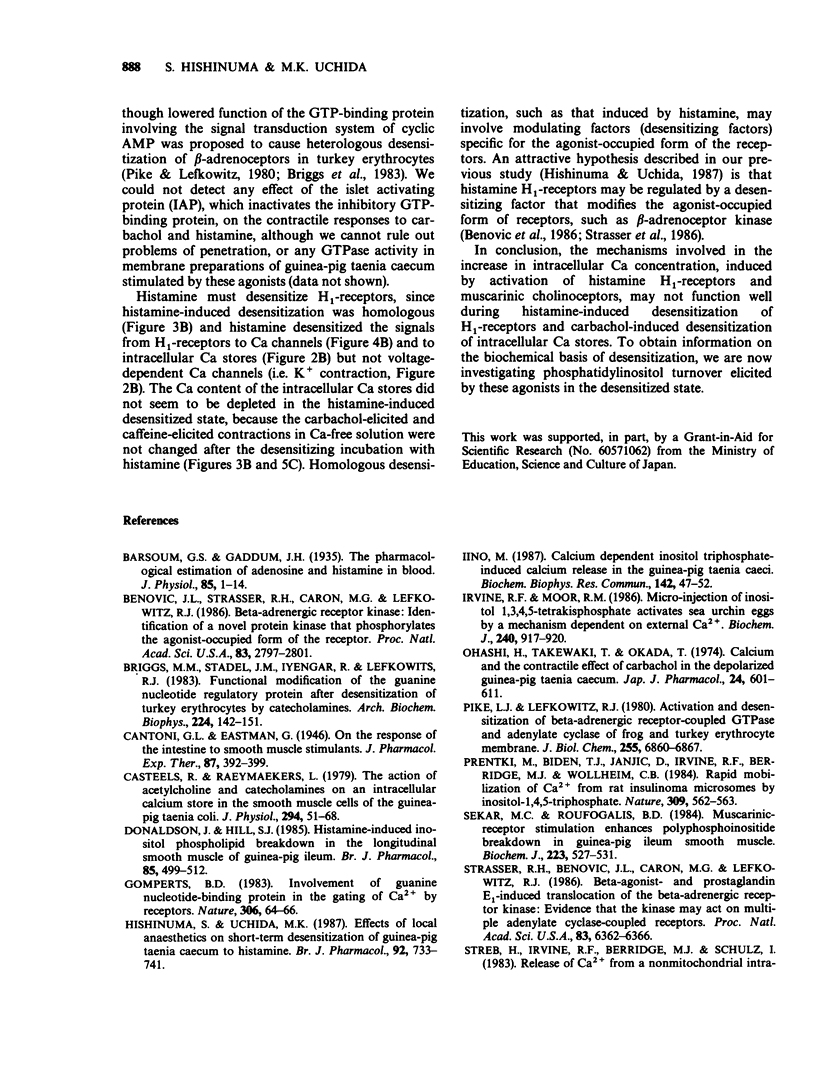
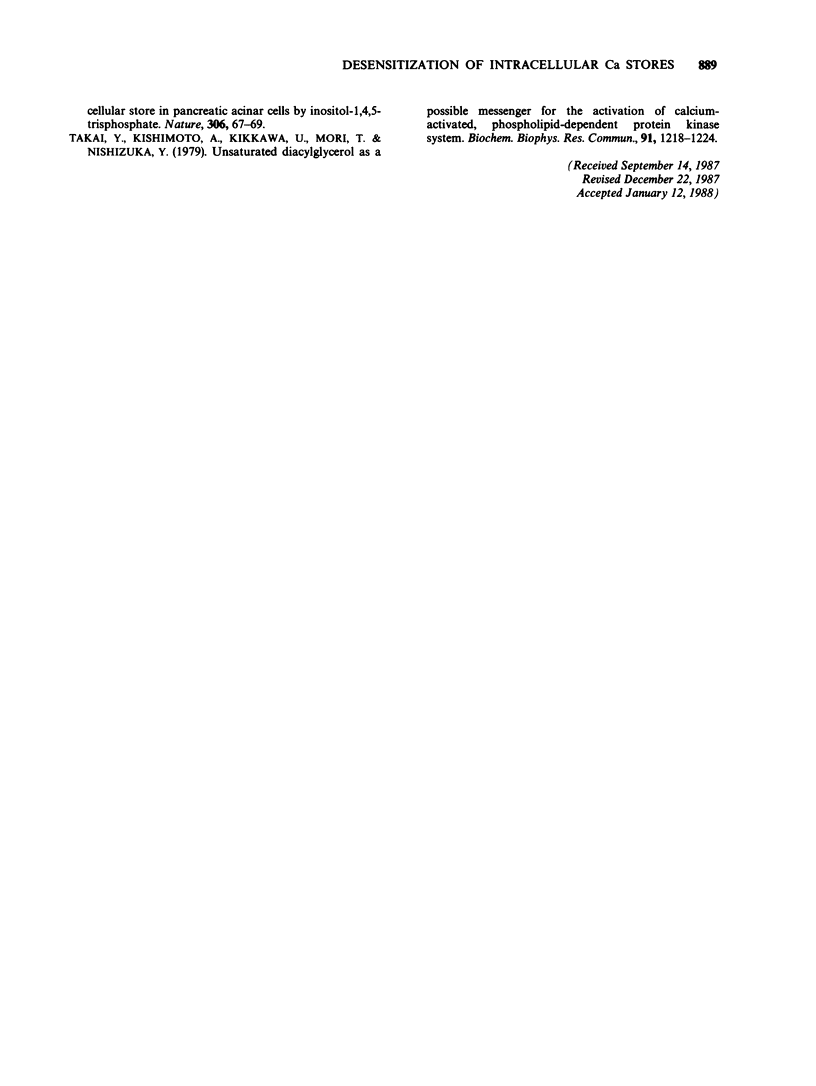
Selected References
These references are in PubMed. This may not be the complete list of references from this article.
- Barsoum G. S., Gaddum J. H. The pharmacological estimation of adenosine and histamine in blood. J Physiol. 1935 Aug 22;85(1):1–14. doi: 10.1113/jphysiol.1935.sp003298. [DOI] [PMC free article] [PubMed] [Google Scholar]
- Benovic J. L., Strasser R. H., Caron M. G., Lefkowitz R. J. Beta-adrenergic receptor kinase: identification of a novel protein kinase that phosphorylates the agonist-occupied form of the receptor. Proc Natl Acad Sci U S A. 1986 May;83(9):2797–2801. doi: 10.1073/pnas.83.9.2797. [DOI] [PMC free article] [PubMed] [Google Scholar]
- Briggs M. M., Stadel J. M., Iyengar R., Lefkowitz R. J. Functional modification of the guanine nucleotide regulatory protein after desensitization of turkey erythrocytes by catecholamines. Arch Biochem Biophys. 1983 Jul 1;224(1):142–151. doi: 10.1016/0003-9861(83)90198-4. [DOI] [PubMed] [Google Scholar]
- Casteels R., Raeymaekers L. The action of acetylcholine and catecholamines on an intracellular calcium store in the smooth muscle cells of the guinea-pig taenia coli. J Physiol. 1979 Sep;294:51–68. doi: 10.1113/jphysiol.1979.sp012914. [DOI] [PMC free article] [PubMed] [Google Scholar]
- Donaldson J., Hill S. J. Histamine-induced inositol phospholipid breakdown in the longitudinal smooth muscle of guinea-pig ileum. Br J Pharmacol. 1985 Jun;85(2):499–512. doi: 10.1111/j.1476-5381.1985.tb08887.x. [DOI] [PMC free article] [PubMed] [Google Scholar]
- Gomperts B. D. Involvement of guanine nucleotide-binding protein in the gating of Ca2+ by receptors. Nature. 1983 Nov 3;306(5938):64–66. doi: 10.1038/306064a0. [DOI] [PubMed] [Google Scholar]
- Hishinuma S., Uchida M. K. Effects of local anaesthetics on short-term desensitization of guinea-pig taenia caecum to histamine. Br J Pharmacol. 1987 Dec;92(4):733–741. doi: 10.1111/j.1476-5381.1987.tb11377.x. [DOI] [PMC free article] [PubMed] [Google Scholar]
- Iino M. Calcium dependent inositol trisphosphate-induced calcium release in the guinea-pig taenia caeci. Biochem Biophys Res Commun. 1987 Jan 15;142(1):47–52. doi: 10.1016/0006-291x(87)90449-9. [DOI] [PubMed] [Google Scholar]
- Irvine R. F., Moor R. M. Micro-injection of inositol 1,3,4,5-tetrakisphosphate activates sea urchin eggs by a mechanism dependent on external Ca2+. Biochem J. 1986 Dec 15;240(3):917–920. doi: 10.1042/bj2400917. [DOI] [PMC free article] [PubMed] [Google Scholar]
- Oashi H., Takewaki T., Okada T. Calcium and the contractile effect of carbachol in the depolarized guinea-pig taenia caecum. Jpn J Pharmacol. 1974 Aug;24(4):601–611. doi: 10.1254/jjp.24.601. [DOI] [PubMed] [Google Scholar]
- Pike L. J., Lefkowitz R. J. Activation and desensitization of beta-adrenergic receptor-coupled GTPase and adenylate cyclase of frog and turkey erythrocyte membranes. J Biol Chem. 1980 Jul 25;255(14):6860–6867. [PubMed] [Google Scholar]
- Prentki M., Biden T. J., Janjic D., Irvine R. F., Berridge M. J., Wollheim C. B. Rapid mobilization of Ca2+ from rat insulinoma microsomes by inositol-1,4,5-trisphosphate. Nature. 1984 Jun 7;309(5968):562–564. doi: 10.1038/309562a0. [DOI] [PubMed] [Google Scholar]
- Sekar M. C., Roufogalis B. D. Muscarinic-receptor stimulation enhances polyphosphoinositide breakdown in guinea-pig ileum smooth muscle. Biochem J. 1984 Oct 15;223(2):527–531. doi: 10.1042/bj2230527. [DOI] [PMC free article] [PubMed] [Google Scholar]
- Strasser R. H., Benovic J. L., Caron M. G., Lefkowitz R. J. Beta-agonist- and prostaglandin E1-induced translocation of the beta-adrenergic receptor kinase: evidence that the kinase may act on multiple adenylate cyclase-coupled receptors. Proc Natl Acad Sci U S A. 1986 Sep;83(17):6362–6366. doi: 10.1073/pnas.83.17.6362. [DOI] [PMC free article] [PubMed] [Google Scholar]
- Takai Y., Kishimoto A., Kikkawa U., Mori T., Nishizuka Y. Unsaturated diacylglycerol as a possible messenger for the activation of calcium-activated, phospholipid-dependent protein kinase system. Biochem Biophys Res Commun. 1979 Dec 28;91(4):1218–1224. doi: 10.1016/0006-291x(79)91197-5. [DOI] [PubMed] [Google Scholar]


